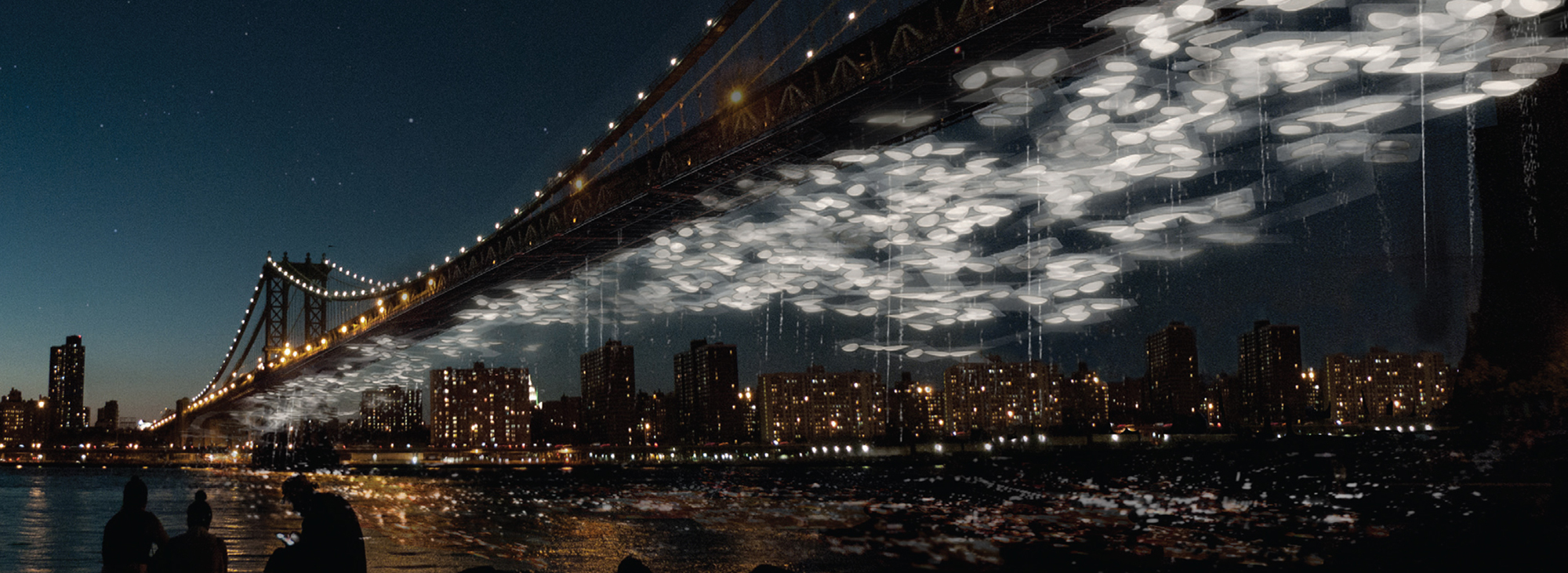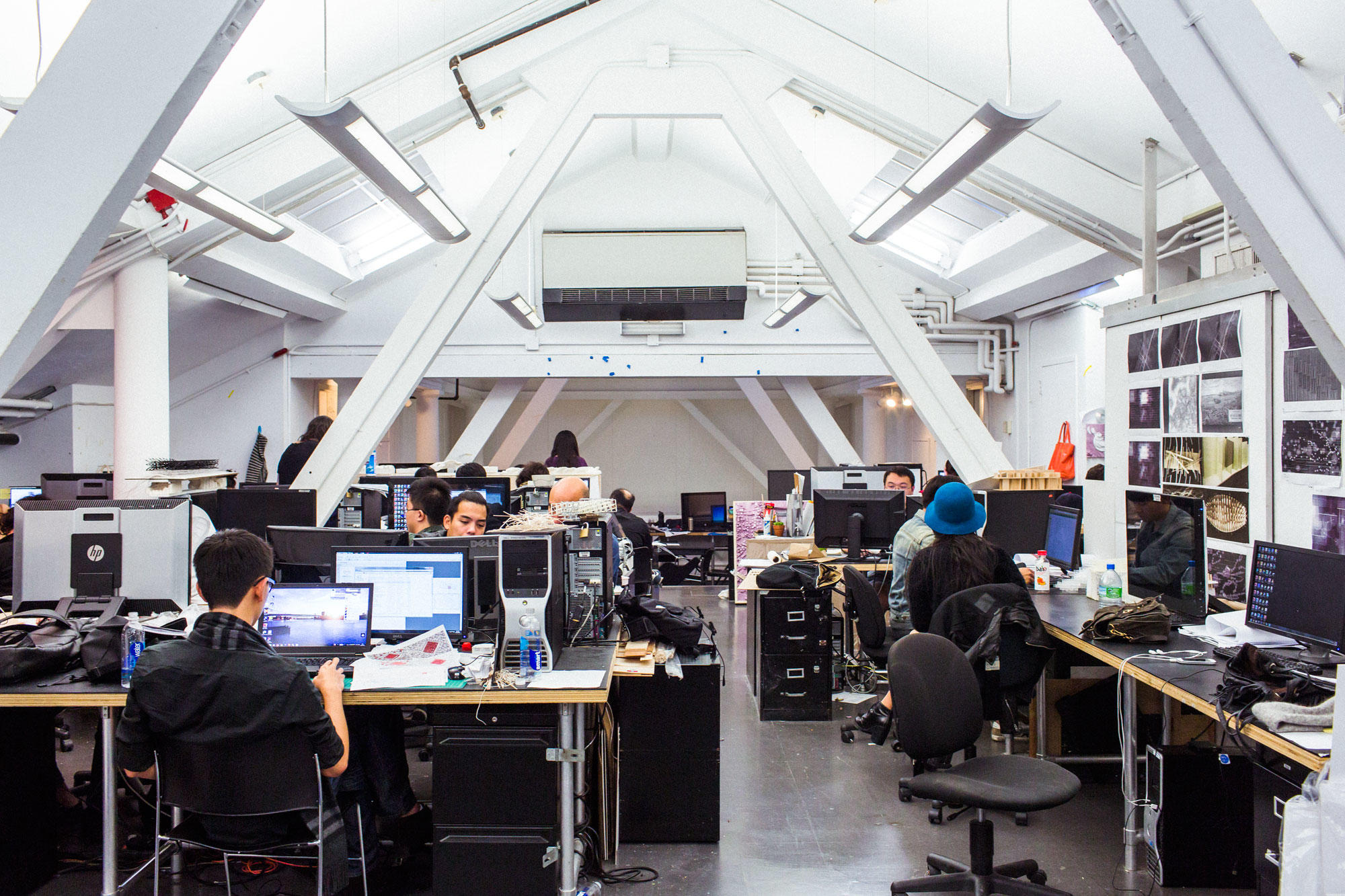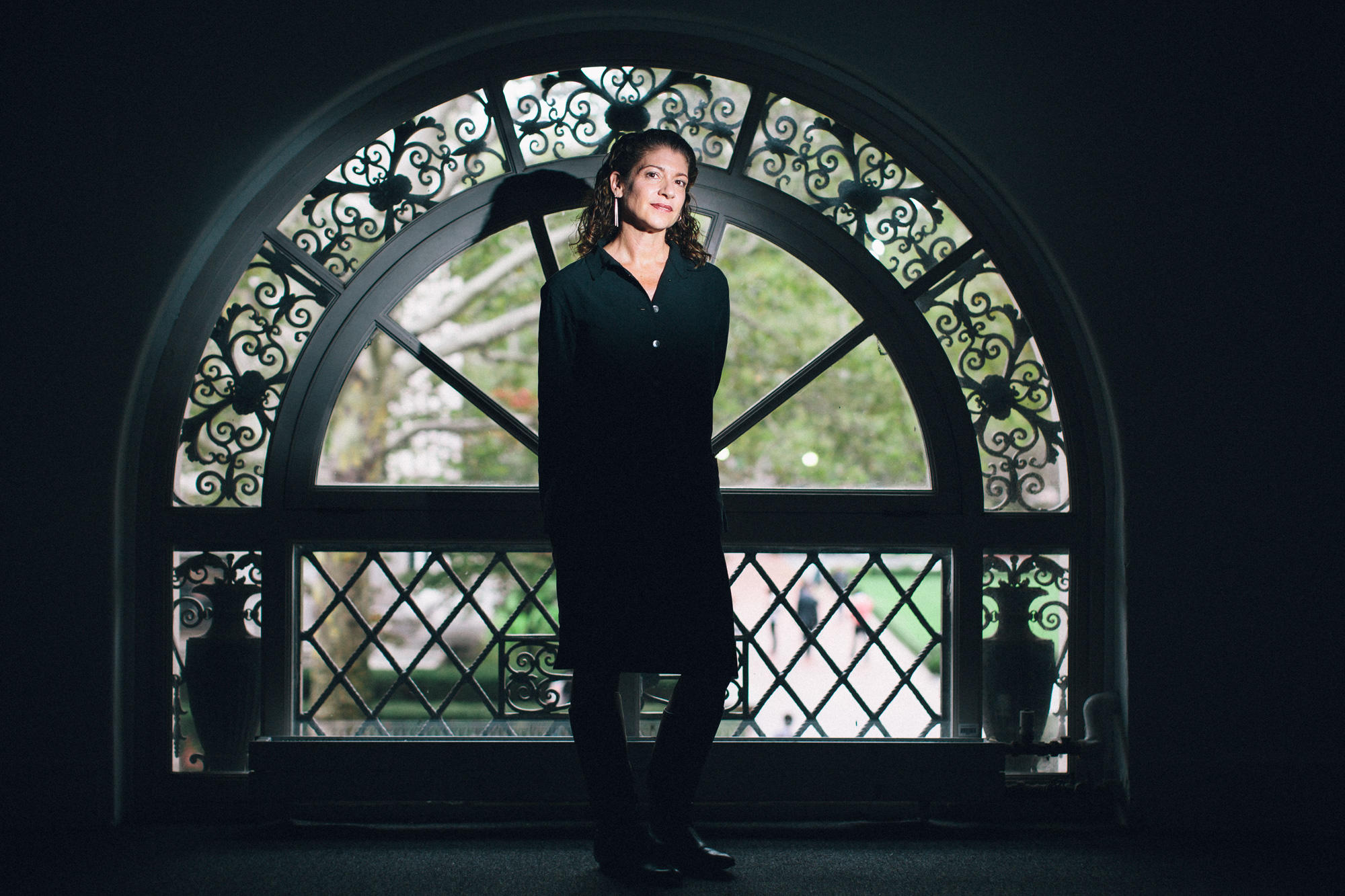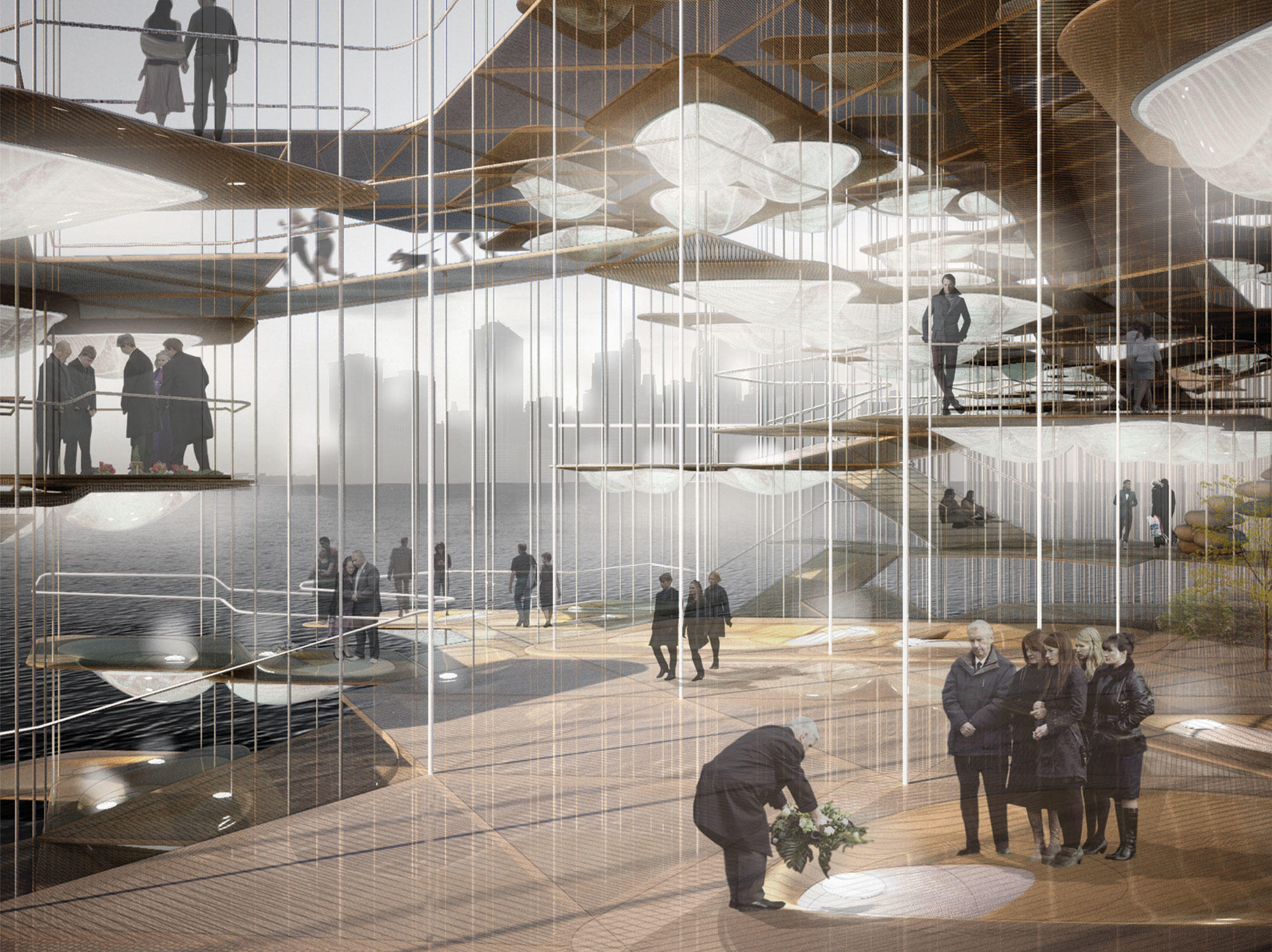
Picture six black coffins lined up in a row. They represent the six deaths per hour in New York City.
Now pan out in your mind’s eye to an aerial view of many more coffins, occupying nearly every inch of a major street intersection. That’s 144 coffins, New York’s deaths per day.
Keep pulling back until you recognize the streets of Manhattan’s Lower East Side, the grid soon filled by the ever-growing number of coffins planted in the ground per week, per month, per year.
After a decade, we’re at a half million deaths. The burial plots required for these coffins is consuming all the street space in Brooklyn and spreading west through Lower Manhattan. The coffins are creeping relentlessly toward SoHo, where Karla Rothstein, seated in her office at the architecture firm Latent Productions, is determined to solve a problem that seems as unstoppable as death itself: where on earth are we going to put our urban dead?
Rothstein ’92GSAPP is an architect and the director of DeathLab, a Columbia research collaborative of architects, scientists, and theologians that uses the coffin-multiplying image in a video meant to demonstrate the urgency of New York’s urban-dead problem. As a specialist in urban spaces, Rothstein, who is an associate professor at Columbia’s Graduate School of Architecture, Planning, and Preservation, is thinking about what most of us would rather not: what becomes of our bodies when we die, and what impact that has on the living.
But even more eye-opening than the scope of the burial-space problem are DeathLab’s solutions.
Some of these are illustrated in meticulous renderings that are printed and stacked on Rothstein’s desk. If DeathLab’s designs bear out, the remains of New York’s dead may soon be suspended from the Manhattan Bridge in glowing pods — or, to put it in more scientific terms, in vessels illuminated by the organic energy latent in our loved ones’ biomass.
This vision — what the design team calls Constellation Park — is the culmination of years of urban-design research, scientific findings, and heartfelt sensitivity to the spiritual needs not only of mourners, but of society at large. At first pass the entire project may feel like a stretch. But take a deeper look into where America’s burial practices are now and where they’re headed, and soon you may see DeathLab’s proposal as an ingenious and welcome alternative.
“Once you start thinking about our burial system, the logistic imperative of space becomes kind of obvious, even though it’s something that’s not widely discussed,” says Rothstein. “All of the cemeteries in New York equal about five times the area of Central Park. It’s a vast territory. And it’s basically full.”
It was back in her graduate-school days that Rothstein became interested in the peripheral spaces of cities. These outer territories are where most societies build their cemeteries and their crematoriums. Rothstein realized that most cities — especially her own — have reached a tipping point: residents who have lived in Queens for eighty-five years are being laid to rest eighty-five miles away in New Jersey; low-income families in Brooklyn have to splurge on train tickets to pay respects to loved ones buried in plots so costly that they should come with a mortgage.
In response, Rothstein is devising plans for local memorial sites that can be woven into the fabric of everyday city life. The DeathLab researchers, all with their own areas of expertise and interests in the problems around burial, have gone on a global search for understanding. They’ve visited cemeteries in Beijing and Jordan, explored columbaria in Tokyo, and studied how bodies are interred in Rio. What they’ve found is that the United States is one of the last nations in the world that still favors embalmment and burial. They also found that the negative consequences of the American burial tradition run far deeper than a simple matter of space.
Embalmment is a preservation process that grants a small window in which the body assumes a peaceful image of natural rest. According to Rothstein, that’s about as natural as embalmment gets. She calls the procedure itself “invasive,” but that is putting it lightly. During embalmment, the body is drained of its blood and pumped full of formaldehyde, a highly toxic, malodorous carcinogen. The eyelids are glued shut. The mouth is wired closed, and every orifice gets plugged. The body is groomed for the funeral service, then often placed in a rubber-sealed casket that, while protecting the body from perceived underground evils (“like worms,” Rothstein supposes), causes it to unnaturally decompose into what Rothstein describes as a sort of “black goo.” The casket is lowered into the ground, where what unites with the earth isn’t the body but the toxic formaldehyde that eventually escapes even the most heavy-duty casket and seeps into the soil — if we’re lucky, away from our sources of groundwater.
So ecological concerns joined spatial efficiency on DeathLab’s list of priorities. And it’s these concerns that ruled out the most obvious solution to our space problem — cremation. In its research into the environmental impact of cremation, DeathLab found that the process, which requires a fire to burn at 1,500 degrees Fahrenheit for at least two hours, is ecologically undesirable because of the required energy, the use of non-renewable fuels, and the sometimes toxic gases released to the atmosphere. Studies have demonstrated that the amount of energy used to cremate a single body equals the home-energy demands of a typical American over an entire month. The United Kingdom’s government-run Environment Agency found in 2005 that the burning of dental fillings during cremation was responsible for 16 percent of the nation’s mercury pollution.
Finding an environmentally sound, spatially efficient alternative for body disposal has been one of DeathLab’s top priorities, and perhaps its greatest challenge. Few such processes exist. One that DeathLab has considered is “promession,” in which the body is freeze-dried in liquid nitrogen, allowing it, as Rothstein says, “to be shattered to dust with a slight vibration.” It’s biologically based, so Rothstein likes it as a technique, though it remains largely conceptual: to her knowledge no commercial prometorium has yet been built.
Another form of organic disposition that DeathLab has researched is alkaline hydrolysis, or “flameless cremation.” In this method, the body is exposed to a lye solution that, with the help of a low-energy pressurized chamber heated to 350 degrees Fahrenheit, breaks down the body into a small remainder of mineral ash and disposable fluid. DeathLab describes the latter byproduct as a “greenish-brown liquid containing amino acids, peptides, sugars, and salts,” but opponents of alkaline hydrolysis (of which there are many) prefer a terser label: sludge.
Religious institutions including the Catholic Church have declared the disposal method of the liquid via public sewer systems “undignified” for both body and spirit, all but insinuating that alkaline hydrolysis is akin to pouring Grandma down the drain. In 2008, a push to bring alkaline hydrolysis to New York was defeated by legislators who branded the initiative “the Hannibal Lecter bill,” after the infamous fictional serial killer. Today, the process is legal for commercial use in only seven US states. It’s clear that if DeathLab is going to incorporate accelerated decomposition in its urban designs, it’s going to have to develop it itself.
To that end, DeathLab is collaborating with Kartik Chandran, an associate professor of earth and environmental engineering at Columbia and the winner of a 2015 MacArthur “genius grant” for his work recovering wastewater for use as a resource. It was Chandran’s lab work on biological fermentation and decomposition that caught Rothstein’s eye in 2011. Recently, Rothstein and Chandran secured a $27,500 grant from the Earth Institute that will enable the development of anaerobic microbial digestion: microorganisms that can consume bodies without the need for oxygen. This method will reduce the corpse to a smaller amount of material. But more strikingly, it will produce energy that can be harnessed to generate light.
Which brings us to DeathLab’s grandest vision, Constellation Park, where your loved ones would twinkle along a bridge in the Manhattan skyline. Constellation Park is one of DeathLab’s preferred memorial designs because it satisfies its most cherished ideals. The urban memorial is local and accessible (extravagantly so, since you could see your deceased loved one from miles away). It’s suspended from a bridge, so it has no footprint. It’s integrated into the city’s preexisting infrastructure, and it’s not cloistered — platforms and walkways below the bridge will allow people to visit and leave flowers by the vessels. Constellation Park is renewable, too, because the bodies will naturally decompose through microbial digestion, after which a small amount of remains can be retrieved by the family, opening the vessel up for a new body.
Perhaps most importantly, DeathLab believes that Constellation Park will provide spiritual consolation. Rothstein understands that memorials must offer solace above all else, and that’s why she brought in Christina Staudt ’01GSAS, a grief counselor and the chair of the Columbia University Seminar on Death, which hosts monthly discussions about the role of death in our society. Mark Taylor, a professor in Columbia’s Department of Religion, is also a part of DeathLab, consulting on the role of spirituality during death and mourning.
Communal solace is the primary goal for Constellation Park, where the glowing light emitted from each vessel would wax and wane before peacefully extinguishing after a year — though DeathLab also seeks to calibrate the duration of decomposition to support the needs of the bereaved.
“People are so moved by the possibility that the corpse of a loved one could create light,” Rothstein says. “We don’t talk about death; we don’t think about it. But to feel like your grief would be part of a larger community, and this person whose life is being honored remains part of this enduring constellation — it’s something people respond to really positively.”
Despite initially supportive reviews of the concept of Constellation Park, Rothstein knows that it will take a larger shift in cultural attitude for her project to gain widespread acceptance. Death is a touchy subject in American culture — the dead are supposed to be in our outlying cemeteries, not smack-dab in an iconic skyline.
But Rothstein isn’t asking the culture to uproot existing mores. Our traditional burial system “is, for most people, incredibly comforting and desirable,” she admits. “Our intent is not to deny that. It’s really to show that there could be other alternatives.”
These alternatives may be more in line with our values than we first thought — and available sooner than we’d expect. Rothstein says that DeathLab hopes to gain public and municipal support to develop a prototype of the illuminated vessels in an urban park — an ideal way of getting the public comfortable with the much larger idea of Constellation Park. To further educate the public, DeathLab will also host a “Life and Death” colloquium at Columbia on April 1.
In the meantime, Rothstein and DeathLab will continue to refine a new method of anaerobic microbial digestion, with a focus on creating an organic material that mimics the mortuary processes of the body — a technique that would allow them to test human decomposition without the human. They’ll work on the science and design, and Rothstein, through her teaching, will continue to influence cultural views. She’s optimistic about a society that she sees as increasingly conscientious about the welfare of the world even after we’re gone.
“I think the choices we make about our dead,” Rothstein says, “reflect the character of the living.”





